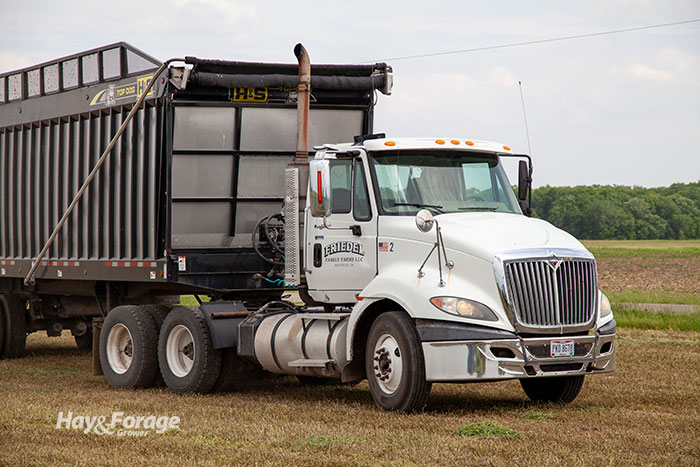Prioritize proper tire pressure |
| By Amber Friedrichsen, Associate Editor |
|
|
 For many, tire pressure may not be top of mind unless the low-pressure light comes on or a tire goes completely flat. Regularly checking and adjusting tire pressure not only protects the integrity of tires, but it prevents soil compaction and maximizes the fuel efficiency of machinery. Both overinflated tires and underinflated tires can damage the soil surface and expedite tire wear. In a recent article from Penn State Extension, Sjoerd Duiker points out that overinflation and underinflation have separate consequences as well. “Overinflation may cause loss of traction, excessive compaction, fast wear, high fuel consumption, fewer acres covered, and loss of operator comfort,” the professor of soil management and applied soil physics writes. “Underinflation, on the other hand, can cause sidewall damage, a poor ride, tire bead unseating, and fast wear.” Duiker notes tires are usually overinflated coming from the dealership or after they are mounted on new rims. Inspecting tires for wear and checking tire pressure often — especially during the height of spring planting and fall harvesting seasons — will help reduce negative impacts on the soil and ensure better equipment use. High pressure causes compaction Overinflated tires will show wear in the center of the tread, whereas underinflated tires are more likely to become cracked in the sidewall. Tires inflated to greater pounds per square inch (PSI) also tend to cause more stress and compaction to the soil surface compared to tires with lower PSI. Tires with lower PSI have a larger surface area, so the weight of equipment is distributed over a wider range. “Research at Ohio State showed that a tractor with duals inflated to low pressure caused less compaction than a similar tractor with tracks, but when the duals were inflated to high pressure, it caused the most compaction,” Duiker adds. Proper tire pressure depends on tire size, tire load, and the speed of operation. Tire size in the standard format depicts tire width and the diameter of the rim. For instance, a measure of 16.9-30 means the width of the tire is 16.9 inches and the diameter of the rim is 30 inches. The dash indicates it is a bias-ply tire. Tire size in the metric format shows tire width, the ratio of width to sidewall height, and the diameter of the rim. A tire size of 710/40R22.5 means the tire width is 710 millimeters, the ratio of width to sidewall height is 40, and the diameter of the rim is 22.5 inches. The “R” indicates it is a radial tire. After finding tire size, continue to assess tire load and speed of operation. “With the heaviest load you would be pulling with your tractor or load in your combine, weigh the front and rear axle. For example, at the grain elevator,” Duiker says. “Then determine the maximum speed you will be driving at and write down those tire specs.” Equipment companies should have inflation guidelines in a tire book or on their website. Use your specifications to determine the correct tire pressure for your equipment. Duiker also recommends using a tire gauge that is accurate to 1 PSI to evaluate tire pressure. |
